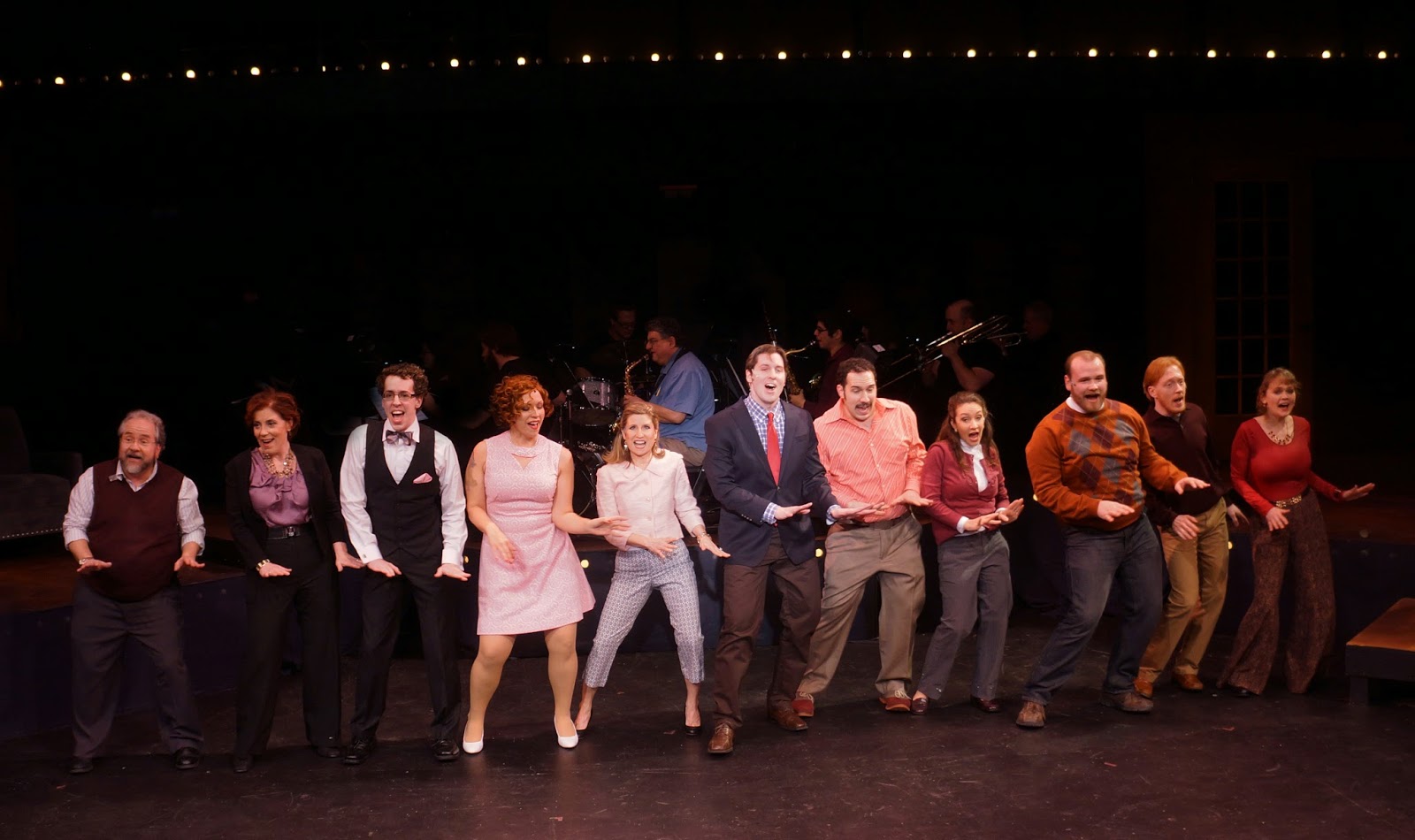Oliver (Phineas Peters) & The Artful Dodger (Noah Parets)
(Photo: Mark Turek)
The technical crew have created this twist, a far darker version of “Oliver!” than audiences are used to, but one that is eminently suitable for this show, based as it is on its equally dark Dickensian source. If the Set Design by Eugene Lee rings a bell, it’s because it’s essentially the same set utilized for the company’s recent “A Christmas Carol”, with a few minor tweaks, such as The Three Cripples Tavern sign and a curtain warning that only those who work will eat. (The original Broadway show is still remembered for its groundbreaking revolving set, often imitated since). The Costume Design by William Lane (notably for Fagin) and Lighting Design by Brian J. Lilienthal make great contributions to the look and feel of the production. The Sound Design by Peter Sasha Hurowitz could use some of that tweaking to balance the band with the singers. On the whole, it’s a success at recreating the grim Victorian era. But, as they say of restaurants with gorgeous design, you can’t eat the wallpaper. The proof is in the pudding; it’s first and foremost the actors that make or break a show.
Fortunately, this company has a deep bench of true repertory actors, and a keen eye for casting. The huge cast is led by Phineas Peters, a Trinity stalwart, in the title role. The pivotal role of The Artful Dodger is played by Noah Parets, whose recent work includes the title role in “Billy Elliot”; simply put, he’s marvelous, an assured and charismatic presence who moves extraordinarily well. The impressive cast fills the roles of Fagin (a fine Stephen Berenson), Nancy (the heartbreaking Rachel Warren), Bill Sikes (the menacing Timothy John Smith), Mr. Bumble (Tom Gleadow), Noah Claypole (William John Austin), Mrs. Sowerberry (Lauren Gemelli), also playing Bet, Mr. Sowerberry (Erick Pinnick), also playing Dr. Grimwig, Mrs. Corney (a hilarious Anne Scurria), also playing Mrs. Bedwin, Mr. Brownlow (Stephen Thorne), Charlotte (Whitney White), also playing Old Sally, and of course those ubiquitous children (doubling as workhouse orphans and Fagin’s band of followers): Alexander LeBlanc, Lily McMahon, Samia Nash, Tara Sullivan, Benjamin Thornton, and Emma and Eva Senerchia. There’s talent enough here for several “Annies” and “Newsies”.
The fabulous score has a pocketful of standout numbers, including the title song, as well as the orphans’ lament ““Food, Glorious Food”, Oliver’s sweet “Where Is Love?”, the Artful Dodger’s bouncy “Consider Yourself”, Fagin’s instructional “You’ve Got to Pick a Pocket or Two”, the ragamuffins’ “I’d Do Anything”; there‘s also Fagin’s threatening “Be Back Soon”, Nancy‘s rousing double-entendre “Oom-Pah-Pah”, Fagin’s theft-affirming “I’m Reviewing the Situation”, the ironic anthem “It’s a Fine Life” (with the wonderful line “though diseased rats threaten to bring the plague in”), the plaintive “Who Will Buy?”, Sikes’ rant “My Name”, and Nancy’s tender “As Long as He Needs Me”. It’s no wonder the original Broadway version of the show won the Tony for Best Score.
It’s a truly revelatory revision of this musical, a piece of theatrical legerdemain on the part of its directors. Whether you’ve seen this musical before or it’s your first exposure to a live production, its likely you won’t soon forget this production. You simply won’t want it to end. We as theatergoers could do worse than echo the poignant plea of Oliver himself: “Please, sir, (we) want some…..more?”






